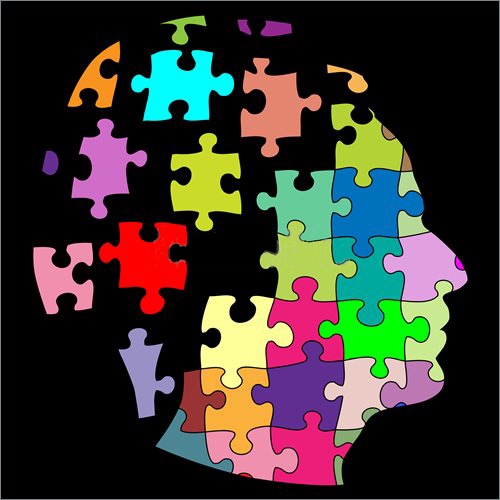|
|
|
|

![]() All male humans alive today can be classified into a specific Y-DNA Haplogroup within the Y-DNA Haplotree based on SNP[1] markers found in their Y-DNA. These SNP mutate slowly, over time, creating new SNP's which create different subclades (branches) for that individual and his descendants (family). Subclades typically occur over many generations, perhaps every 300 to 500 years, but can vary somewhat and might be as little as half that or even twice that. This collection of SNP's can then said to be that person's Haplo "spread" and compared to anyone else for a match, or maybe used to analyse where they split off from each other over time.
All male humans alive today can be classified into a specific Y-DNA Haplogroup within the Y-DNA Haplotree based on SNP[1] markers found in their Y-DNA. These SNP mutate slowly, over time, creating new SNP's which create different subclades (branches) for that individual and his descendants (family). Subclades typically occur over many generations, perhaps every 300 to 500 years, but can vary somewhat and might be as little as half that or even twice that. This collection of SNP's can then said to be that person's Haplo "spread" and compared to anyone else for a match, or maybe used to analyse where they split off from each other over time.
Human Y-DNA Haplogroups are named using the letters of the alphabet, A to Z. When a new branch (subclades) is created (mutated) the Y-DNA Haplogroup is then annotated with that new SNP id. These subclades are letter named using letters and numbers, typically denoting where this marker is located on the DNA string. Eventually a persons "complete" Haplogroup can be a long string of confusing numbers. This is often reduced to the general major group number (A-Z) and then the most recent known "terminal number." An example of that might be "R-Y77314" where "R" is the most basic category and "Y77314" the most recent known subclade (mutation). The problem with this is that very few tests actually test for every possibility (that's expensive) and current technology is typically allowing somewhere only about as recent as 1600-3000 years ago, as close to now as we can get. Therefore, use of these SNP Haplo Marker tests requires we see each person's complete (so far) test spread to determine if there might be a match or not, even if that particular test is not all that "complete." If it does not match anywhere on down the line (spread), that point indicates where it split (mutated) off starting it's own subclade (branch) making it no longer a close match.
From a practical point of view, the Haplogroup part of Y-DNA testing is interconnected with the other part of testing - the DYS Profile (found separately on this site). If those numbers do not match when compared with some other test, then these Haplogroup numbers are not going to match either, no mater how many are gathered. The value of the Haplo SNP area of Y-DNA testing is best realized when one wants to explore every possibility of a match to determine as much as can be determined about two tests that are very close to begin with. For the purposes and goals of the Aberdeenshire group DNA study, the basic affordable Y-DNA tests puts us in the ball park of who belongs with who else, and who is different from who else.
Using the table (below) of all the Y-DNA tests in this project, each test shows the various SNP's discovered (or predicted) from left to right with the basic Haplogroup on the left and then the various tested (or predicted) SNP's from the earliest to the latest (most recent), on the right. All tests seen together like this should give you an indication of who belongs with who and who does not belong with who. Needless to say, close ancestral relationships should be matched all the way to the latest (most recent) markers.
| Test ID |
Family Group ID | H a p l o |
Significant SNPs - oldest to newest (Terminal SNP) | ||||||||||||||||||||||||||
|---|---|---|---|---|---|---|---|---|---|---|---|---|---|---|---|---|---|---|---|---|---|---|---|---|---|---|---|---|---|
| 155134 | Peter Jamieson-1768 Aberdeenshire, Scotland |
I | M170 | M253 | DF29 | Z58 | Z139 | ? | ? | ? | ? | ? | ? | ? | ? | ? | ? | ||||||||||||
| 270199 | Peter Jamieson-1768 Aberdeenshire, Scotland |
I | M170 | M253 | DF29 | Z58 | Z139 | S2293 | Z2541 | S19185 | BY52426 | FT126507 | PH1786 | ? | ? | ? | ? | ||||||||||||
| 278401 | Alexander Jamieson-1851 Banffshire, Scotland |
I | M170 | M253 | DF29 | Z58 | Z139 | ? | ? | ? | ? | ? | ? | ? | ? | ? | ? | ||||||||||||
| IN113153 | James Jamieson-1771 Aberdeenshire, Scotland |
R | M207 | P25 | M269 | ? | ? | ? | ? | ? | ? | ? | ? | ? | ? | ? | ? | ||||||||||||
By examining SNPs from indigenous individuals, around the world, anthropologists have been able to estimate the time frame and location of each SNP. This then can help us better understand, at least in a general way, where each tested person's ancestors were located and how generations migrated at certain times throughout history.
We do not list the specific details of any individual SNP's here on this page, given the volume and complexity of that information. Besides, that sort of thing is very well covered in other places like Wikipedia, FTDNA, Eupedia and many others.
DYS Results - The YDNA Profile
In addition to the (above) Haplo part of YDNA testing, there is also the YDNA Profile (based on STR markers found in their Y-DNA) part of the test. The overall collection of STR markers can be thought of, like a fingerprint, where every other male in the same (extended) family has that exact same collection of markers.
The DYS "Profile" results for our Aberdeenshire Y-DNA study are separate and different from the Haplogroup results shown above and can be found elsewhere using the following link.
![]() - Click here for the genetic marker test results (Y-DNA Profile)
- Click here for the genetic marker test results (Y-DNA Profile)

![]() In the last few years DNA testing for use with researching family histories and genealogy, has become widely available, affordable and as such a unique and important toot. There are now several very reputable labs who do this specifically for genealogy as well as groups who have organized for unique family projects.
In the last few years DNA testing for use with researching family histories and genealogy, has become widely available, affordable and as such a unique and important toot. There are now several very reputable labs who do this specifically for genealogy as well as groups who have organized for unique family projects.
We test for the Y Chromosome and use the Family Tree DNA - Genealogy by Genetics, Ltd. company. This type of DNA testing helps us understand and focus on the patriarchal nature and family groupings for our Jam?son families of Aberdeenshire and the North East area of Scotland project.
We urge every Jam?son male descendant (must have the Jam?son surname) to help find your own ancestors with this DNA program. Please contact us if you have any questions, or about how to coordinate your results within our project.
| [1] | SNP is an acronym for "Single Nucleotide Polymorphism" a scientific term used to identify a series of long term (thousands of years) markers in DNA testing and analysis, usually for the purpose of determining a Haplogroup. |